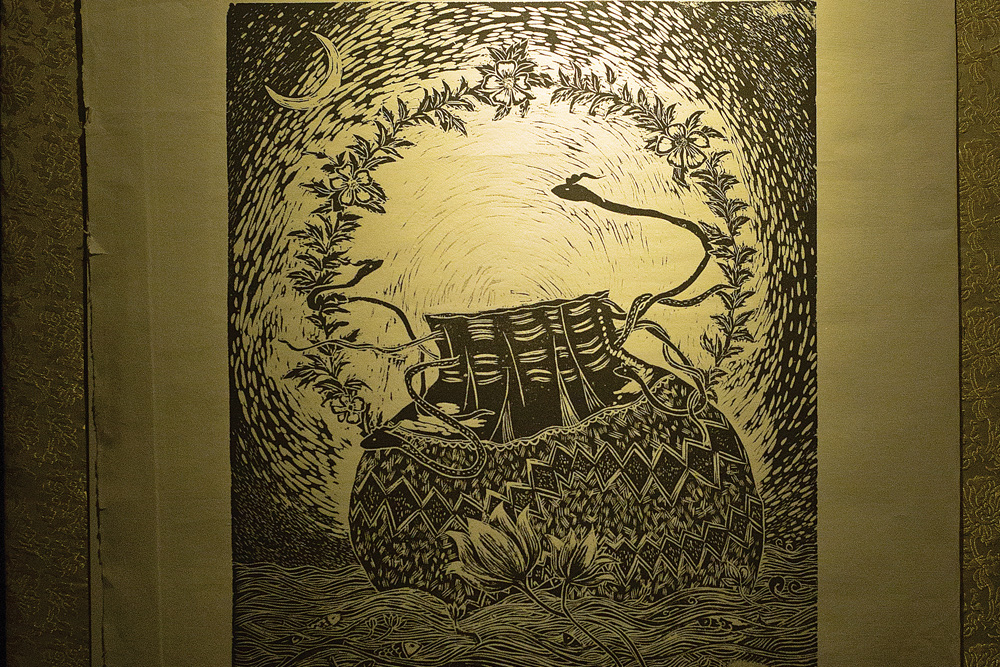
KATHMANDU: Globally, art investment has become a status symbol of the rich and wealthy where transactions in millions of dollars are made for single pieces. The most expensive painting sold till date is considered to be Salvator Mundi by Leonardo da Vinci. The painting was bought at an auction held at Christie’s New York in 2016 for a staggering $450 million. When we look at the international figures, the global art market was valued at approximately $65.1 billion in 2021. In Nepal, the market for art is still in nascent stages. There has been a gradual development but artists struggle to sell their work due to the small pool of buyers. Sangeeta Rana Thapa, Founder and Director of Siddhartha Art Gallery founded in 1987, has curated over 500 shows of Nepali and international artists over the years.
However, she adds that every single gallery and every single collective space is reaching out to the same buyers. “The number of people visiting the exhibitions has obviously increased in recent times but I couldn’t say the same for the number of buyers,” shared Thapa. But change is happening, albeit slowly. “From 1987 till now, there has been a tsunami of change which we were able to witness during the recent Kathmandu Triennale, Nepal’s premier international platform for global contemporary arts,” informs Thapa adding that there was a footfall of around a thousand plus visitors at Nepal Art Council and 800 in Patan Museum on the final day of the Kathmandu Triennale. “When we look at the art scene in Nepal, we can see the market for traditional art is quite good as it has a long history and has reached many parts of the world,” stated Thapa, elaborating that Chinese nationals and a few museums in the United States of America and the United Kingdom have been collecting traditional Nepali art.
According to her, there is a high demand for Thangka and Paubha paintings. Paubha’s are traditional religious painting made by the Newar community which depicts deities, mandalas or monuments, and are used to help the practitioner meditate, whereas the Tibetan equivalent is known as Thangka. Prajwal Shakya, Director of Bodhisattva Gallery, feels that the market for contemporary art is more promising than that of traditional art. The reason behind this, he mentioned is due to the price factor where contemporary art is a bit more affordable. “Moreover, contemporary art is easier to keep at home as you don’t have to worry about the sacred obligations that you might be impelled to think of when keeping religious art work at home,” shared Shakya, adding it is also open to interpretation. Manish Lal Shrestha, who is a contemporary artist himself and running Gallery Mcube, said that contemporary art is just starting to draw interest. With very little promotion it hasn’t reached a wider audience, he opined. [gallery columns="1" link="file" size="full" ids="24175"] “Back in around 1987, there was a peaceful and stable environment in Nepal, tourism was flourishing, and the art gallery was very popular even among tourists,” recalled Thapa. With ten years of the insurgency which hit practically every sector, things took a downturn. To make matters worse the country was ravaged by a devastating earthquake in 2015 followed by the blockade in the southern borders, mentioned Thapa, which made it really difficult for the art market to progress. “And then we had the Covid 19 pandemic. Here we must understand that markets are interconnected and if one sector is affected it tends to have a ripple effect on other industries, including art,” she stated.
Thapa says people spend millions on a single painting for the deep satisfaction that they derive from the beauty of art. “For instance, contemporary artists such as Tenzing Rigdol and Ang Tsherin Sherpa are well celebrated in the West and their paintings are sold for thousands of dollars. And traditional art works are also no less. Art by traditional artist Lok Chitrakar costs around Rs five million,” she shared. That genre of paintings is mostly sold to museum collectors in Japan, China and the USA. Thapa’s Siddhartha Art Gallery sells paintings ranging from Rs 12,000 to Rs 500,000. She also shared that the most expensive art that she has ever sold was for Rs 1.5 million during a tradition thangka exhibition. The value of an art piece is determined on the basis of how much time an artist has spent on the work and also the status of the artist. “There is no such thing as the right value for an art piece. The time spent on the art, the nature of intricate work involved and also the effort that has been put into it all determine an art work. So, there’s nothing like a right price. You look at it, what you see and what you feel is the right price,” stated Shakya.
For those who are in the market to buy art, there are certain things to remember. The first and foremost thing that any buyer has to be aware of is that you have to make sure of the provenance of the art and if the piece is genuine. It may not be a problem in Nepal but in international markets there are many fakes or cloned art works that are being sold. Other things that you have to be aware of are the year it was made, the size, quality of the material that is used and the price that you are paying for the art, shared Thapa. There are many people who buy art for aesthetic reasons and there are also those who buy art as an investment. “Art is a good investment because when the economy booms art price will also go up. The works that I wish I had collected in 1987 have doubled and tripled by now. It is still the right time to buy art in Nepal before it becomes too expensive,” said Thapa. Talking about the future of the art sector, Thapa said, “The more Nepali art gets attention, and international people understand the value and worth of Nepali art, the market price will increase accordingly.”
READ ALSO:





-1765706286.jpg)
-1765699753.jpg)